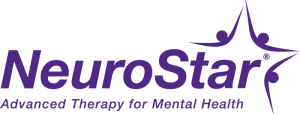With over 1.5 million treatments delivered to 60,000 patients backed with the most clinical research in TMS for depression including: 11 clinical trials and 23 peer-reviewed publications and counting, Neurostar has been proven a safe and effective treatment for depression.
Magnetic energy similar to what is used in an (MRI) is used to stimulate the areas of the brain that are sluggish and causing depressed mood.

Clinical trials have demonstrated the safety and effectiveness of NeuroStar® TMS Therapy in treating patients who have not benefited from prior antidepressant medication. NeuroStar TMS Therapy was studied in adult patients suffering from Major Depressive Disorder, all of whom had not received satisfactory improvement with previous treatments.

NeuroStar is a safe, effective, non-drug depression treatment that uses focused magnetic pulses, similar in strength to an MRI, to revitalize connections in an area of the brain involved in regulating your mood. When these connections are reawakened, many people experience measurable relief from their depression.
In a study of “real-world” outcomes (meaning actual NeuroStar patients), 83% of people who completed the full NeuroStar treatment cycle experienced a measurable decrease in the severity of their depression, and 62% of those completing treatment saw full remission – meaning their depression effectively “went away.” [1]
While there may be some minor discomfort at the treatment site (where the device touches your head), it generally subsides within the first week or treatment. There is no sedation, or impact on your alertness. You can read, watch TV, or talk with your treatment coordinator during your session, and you can drive home immediately after treatment.
Over 300 million people have insurance plans that cover NeuroStar, including Medicare and Tricare. Conditions and coverage can vary by insurance company, and your NeuroStar Team Lead will help you determine your benefits and coverage. We also offer cash-pay and patient financing options if desired, talk with your NeuroStar representative for more details.
NeuroStar is FDA-cleared for adults with Major Depressive Disorder who have not found relief from antidepressant medications. A NeuroStar leader will walk you through the full qualifications for treatment during your initial consultation.
TMS stands for transcranial magnetic stimulation. It is used to treat depression by stimulating the brain non-invasively using electromagnetic fields, similar to those produced by an MRI machine. During TMS Therapy, a magnetic field is administered in very short pulses to the part of the brain that research has demonstrated to be associated with depression. The typical initial course of treatment is about 19-37 minutes daily over 4-6 weeks.
The NeuroStar TMS Therapy system uses short pulses of magnetic fields to stimulate the area of the brain that is thought to function abnormally in patients with depression. The magnetic field produces an electric current in the brain that stimulates the brain cells (neurons). This results in changes that are thought to be beneficial in the treatment of depression.
It usually takes time for healthcare insurers to establish coverage policies for newly approved treatments such as NeuroStar TMS. However, many commercial and Medicare plans have recognized the effectiveness of treating depression with TMS Therapy and now cover TMS as part of their plans. See here for a full list of insurance plans that cover TMS.
NeuroStar® is non-systemic (does not circulate in the blood throughout the body), so it does not have side effects such as weight gain, sexual dysfunction, nausea, dry mouth, sedation, etc. The most common side effects reported during clinical trials were headache and scalp discomfort – generally mild to moderate – occurring less frequently after the first week of treatment.
No. TMS Therapy involves a unique method of using pulsed magnetic fields for therapeutic benefit. The intensity of the magnetic field is similar to that of the magnetic fields used in magnetic resonance imaging, or MRI. These techniques differ radically from the popular use of low intensity, static magnetic fields. These products deliver weak and undirected static fields that are not capable of activating brain cells.

